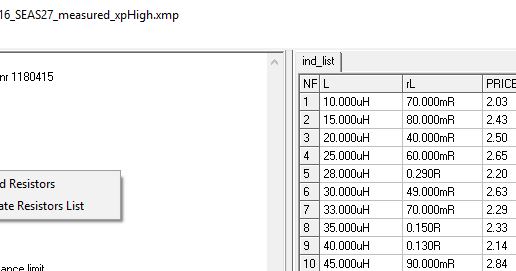I've been trying to make design of a small, simple-to-build and inexpensive speaker that would not need a sub at least for music listening at moderate spl levels. No need for high power. This is third approach, code name "Mechano23". I'm sharing the results and VituixCad project file (LINK) with off-axis measurements in both planes so anyone could play and experiment.
Drivers used in the design:
The box is really simple: rectangular panels (18mm birch plywood) glued with overlaps. No detachable panel, the filters are mounted to the rear panel through the woofer mounting hole.
External box dimensions HxWxD: 290x174x263mm, volume approx. 8 liters. Rear bass-reflex, tuned around 45Hz (fi=35mm d=145mm).
Panel dimensions:
- Front and rear: 174x290mm.
- Side: 227x290mm.
- Top and bottom: 138x227mm.
The box is filled with polyester fiber. To prevent it getting into the speaker basket, I put a thin mesh on the filling.
I made measurements -180..+180 degrees (V orbit) and 0..180 degrees (H orbit) with a step of 10 degrees (VituixCad vxp file with full set of measurements: LINK). I used a manual turntable.
Filter design. The software apparently needed a 2uF capacitor which is not on the E12 list. It was assembled connecting two values of E12 in series: 2.7uF and 6.8uF.
Spl on-axis and power response characteristics with the target lines (simulation).
Filters transferred to VituixCad and slightly modified (series-connected 2.7uF and 6.8uF capacitors were replaced with a single 2uF cap.).
L and R filters assembled on plywood scraps. Wiring diagram.
L and R spl measurement (f6~=48Hz with reference to the average level)
L and R impedance measurement (minimum 4.1R at 220Hz)
List of components:
Inductors:
- L1 330 uH 0.258 R
- L2 560 uH 0.51 R
- L3 1.5 mH 0.94 R
- L4 390 uH 0.42 R
Capacitors:
- C1 6.8 uF
- C2 27 uF
- C3 18 uF
- C4 820 nF
- C5 3.3 uF
- C6 2 uF
Resistors:
- R1 12 R
- R2 8.2 R
- R3 15 R
Last edited:

